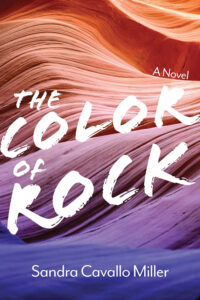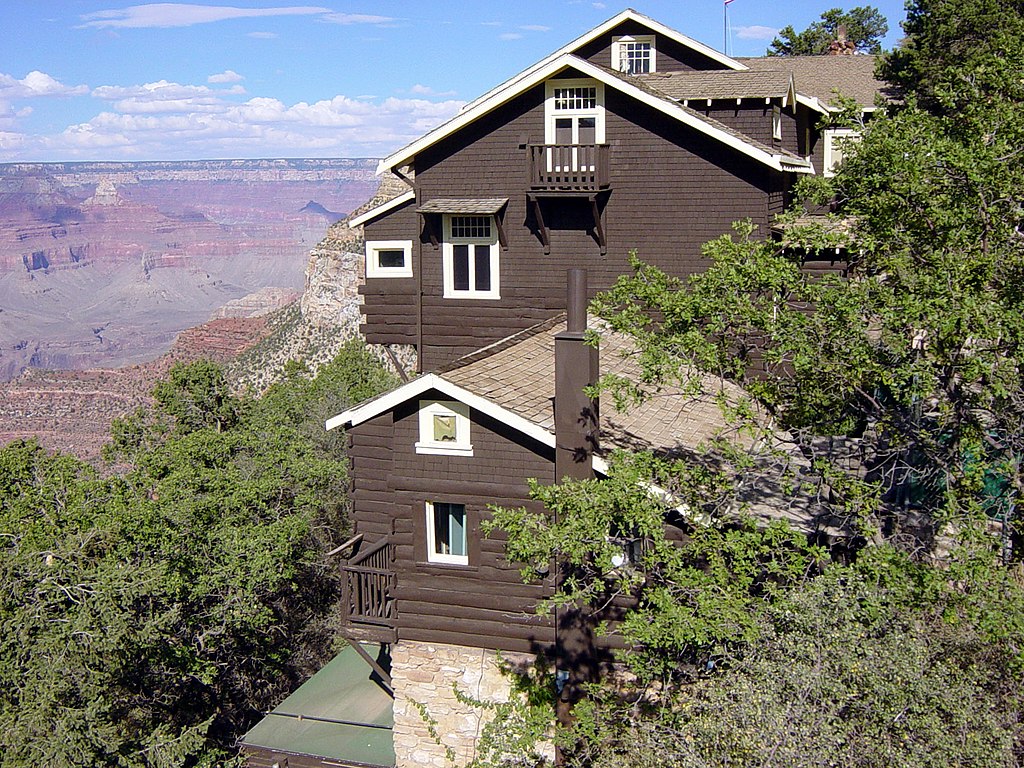
Romance, danger, and the practice of medicine “at the edge of the world” (Grand Canyon National Park, present day): After thirty years as a private practice family physician and teaching at the University of Arizona’s College of Medicine, Sandra Cavallo Miller set out to fill the gap of not enough fiction featuring female doctors and family/community medicine, writing a series of three entertaining Dr. Abby Wilmore medical mystery novels. What the River Said, the third and final installment, is the focus of this review; the other books also cited. Each can stand alone.
Since I had the opportunity to read all three – fast reads averaging 225 pages – I’m confident you can read What the River Said all by itself. You will, though, miss some of the details of the romantic relationship between Abby and Dr. John Pepper when she joins the Grand Canyon Clinic at the South Rim.
The national park setting, also not common in novels, enables Miller to infuse her hobbyist passions in volcanology – for ancient geology like the Park’s limestone “over two hundred million years old” – and astronomy’s “intricate stars” and planets. Allowing her to also strike the right balance between medicine and the healing powers of Nature. A balance between practical, preventative, and challenging running a medical clinic in a place overrun by tourists (nearly six million prior to the pandemic) – meaning Abby and Pepper have a lot of emergencies on their hands – and escaping reality to inhale geological wonders and the mysteries of the unknown.

By creating a female character who “finds solace fleeing in the infinities,” who needs to find a balance between work and play, and has anxieties and vulnerabilities like us, Miller makes sure we’re invested in what happens to Abby. Which means we’re also invested in Pepper, since this medical and nature story and series is also a heartwarming romance. Both feel they’ve failed relationships so they’re cautious, sometimes sending wrong messages about how they really feel. Enter Pepper’s cute “stick-figure” cartoons Abby adopts to add lightness and heart.

By Book 3, Abby and Pepper have become one half of each other’s heart that must be together to feel and stay alive. What the River Said poses the greatest danger to the couple as too many tourists and campers are dying of cardiac arrest, mysterious and suspicious until they start figuring out why but don’t know who is the cause. So much of the flirty, sexual tension in Book 1, The Color of Rock, turns into a different type of tension in Book 3 to the point they almost “never relaxed, never let down their guards, always mindful of where the other walked or drove or sat . . . they orbited each other like double planets, linked by this strange gravity.” They’ve gone from a budding, playful romance to living together, from attraction to a deep, caring, protective, tender love. (Book 2, Where Light Comes and Goes is the exception. Abby and Pepper are apart; she’s accepted a summer job at Yellowstone National Park to decide if she’s ready for commitment.)

The prose has a natural rhythm that’s pleasant to digest, considering something suspenseful happens in every chapter. It’s also poetic when it comes to Miller’s nature writing. She’s a poet too.
One takeaway, among many, is that family/community medicine is a balancing act, necessitating wearing other professional hats: “Roles as a counselor, an orthopedist, a gastroenterologist, and an otolaryngologist.” All on view, packing a lot in without seeming to.
A colorful cast of clinic staff characters send a message about the importance of teamwork. Dependable, competent nurse Dolores, the oldest, isn’t quirky like the other two. Assistant Marcus, exceptionally calm under pressure, is a godsend remembering everything patients tell him at the front desk that he tells Abby. He manages to work alongside the thorn in the group, Priscilla, secretary/receptionist. She adds a humorous tone to the hectic clinic, dressing in inappropriate, outrageous, low-cut tops to attract handsome Dr. Pepper who “talks with his eyes as much as his words,” despite knowing he and Abby are a thing.
Two new characters add storylines and depth to relationships. One is Maddie, fifteen-year-old niece of Pepper who adores him and desperately needs to escape her terribly dysfunctional home for a few summer weeks; her mother is Pepper’s sister who drives him nuts. He tries to hide his angst from Abby, but that only goes so far. Both are very uneasy about the prospect of having this teenager come live with them after all the bad things her mother has said about her, and their inexperience of being role models to a child, let alone a supposedly out-of-control adolescent. Who surprises and delights everyone by turning into a bright spot when trouble happens.
The other is Abby’s patient whom Maddie befriends. A female farrier for mules, not horses. (A farrier works with the hooves of horses and mules and knows some blacksmithing, but a blacksmith is solely concerned with the metal on the hoof. Had to look that one up!) Presented as rare for a farrier to be a woman, Miller shows the struggles of women in male-dominated jobs, and hints at the use of mules, not horses, at the Grand Canyon.

There’s a second mystery haunting Abby, involving a missing woman, Heidi, she met running on one of the Park’s trails to clear her head. She works at the Kolb Studio, bringing out history dating back to the early 1900s when the Kolb brothers opened up a photography studio that closed in the 1970s. The building was renovated about ten years ago, now a bookstore perched right at the edge Miller writes so atmospherically about.

The Grand Canyon National Park is a place where someone could commit suicide by jumping off a ledge. Miller reminding us of innocent tourists taking selfies or not watching where they’re going plunging to their deaths, and warning visitors to have your wits about you out in the steep, unpredictable wilderness. At 7,000 feet above sea level at the South Rim. (8,000 at the North Rim.) And, when hiking some of the Park’s famous trails, like South Kaibab and Bright Angel Trails.
Beware of stress fractures; not carrying enough water and food; ignoring your diabetes or other health conditions; formidable weather; feeding squirrels – squirrel bites more frequent than you think – and the list goes on and on.
Sometimes the stress causes Abby to have panic attacks. Not what we expect in doctors we trust. Yet almost everyone trusts Abby (except ornery and angry patients) since she’s so competent, caring, and puts her patients’ needs before her own, though she constantly questions herself. Sometimes, not wanting to burden Pepper, she reaches back into her past for support from her friend/advisor/therapist Lucy, with whom she worked with in Phoenix, from where she’s fled. A sixty-year-old gynecologist, she understands women’s moods. Abby also seeks out her “telephone psychologist,” Dr. Karen Goh.
Abby knows when people get sick they’re not their best selves. Miller’s novels delve into “what makes a good person and what makes a bad person, why some people are kind and others turn mean.”
“Welcome to Family Medicine.”
Lorraine
Pingback: Where No One Should Live ← Enchanted Prose